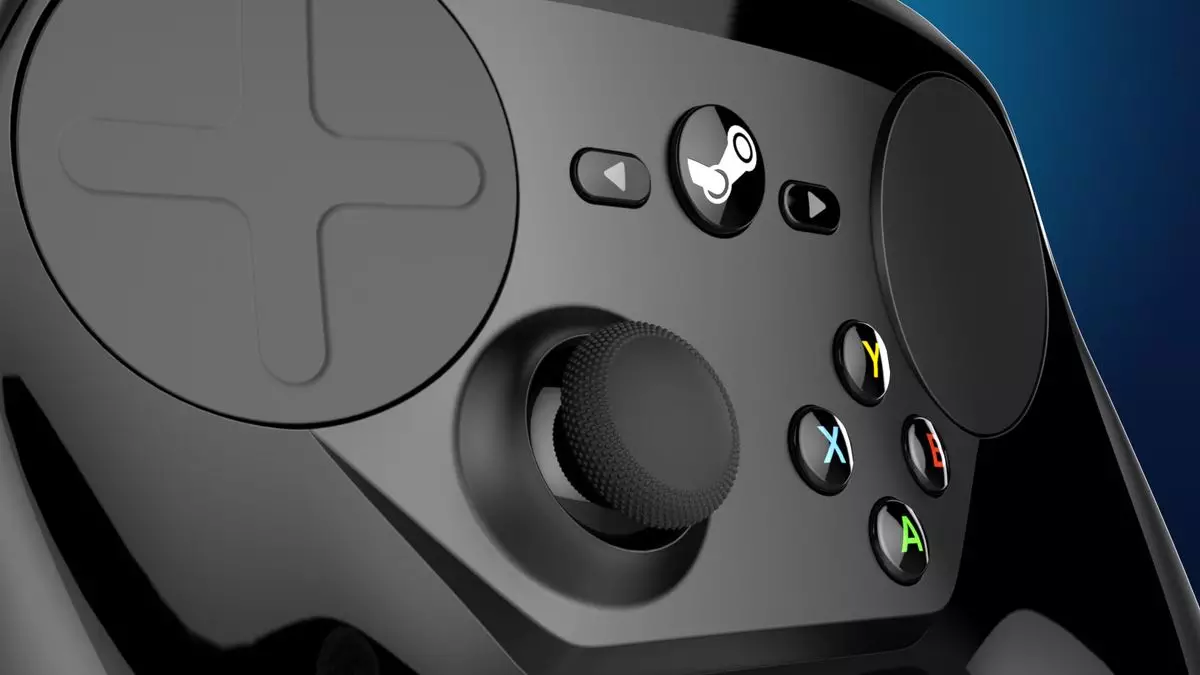The gaming industry is no stranger to evolution. Devices come and go, often meeting fates dictated by innovation, market demand, and user experience. Among the array of gaming controllers that have made their mark, the original Steam Controller holds a peculiar yet significant position, thanks to its ambitious design and ensuing controversies. As whispers of a second iteration commence—referred to as the Steam Controller 2 with the codename “Ibex”—it beckons a closer analysis of its predecessor, the expectations surrounding its successor, and the shifting tides in gaming preferences.
Launched in 2015 and ultimately discontinued in 2019, the original Steam Controller was both groundbreaking and polarizing. While it garnered a fervent following due to its innovative features—such as dual trackpads, gyro controls, and fully customizable back paddles—it simultaneously attracted a cloud of detractors. Many critics, including prominent voices like PC Gamer’s hardware expert Dave James, questioned its practicality. The attempt to bridge the gap between traditional controller ergonomics and keyboard-and-mouse precision proved contentious, as users often struggled to optimize the device for their gaming preferences.
Despite its ambitious design, the Steam Controller came with notable challenges. For one, the absence of official configuration profiles meant users frequently navigated a labyrinth of community-generated setups, not always yielding reliable solutions. Notably, users criticized the build quality and ergonomics, feelings dampened by the limitations of couch gaming trends at the time. The initial idea of facilitating Steam’s couch gaming experience fell flat as the market leaned towards more conventional controllers or keyboard-and-mouse setups, especially with the launch of Windows-powered Steam Machines that failed to resonate with consumers.
Fast forward to 2023, and chatter surrounding the Steam Controller 2 has ignited interest among gaming enthusiasts. Insider leaks suggest that Valve is not merely entertaining the concept but is already in the advanced stages of production. To many, this signals a promising thread of hope for a controller that learns from the pitfalls of its predecessor. However, skepticism remains prevalent; will Valve have the foresight to create a truly user-friendly device instead of rehashing the earlier model’s design flaws?
What intrigues many observers is whether Valve has genuinely shifted its strategy. Whether the new controller will be internally manufactured or involve partnerships with third-party firms has yet to be clarified. This uncertainty, coupled with the lack of concrete details about the controller’s specifications, paints a picture of anticipation tinged with anxiety. As the original Steam Controller sought to redefine the standard for ergonomic design in gaming, this upcoming iteration could further refine the delicate balance between innovation and user comfort.
An essential aspect to consider in the discussion of the Steam Controller 2 is the evolving landscape of gaming habits. Steam’s early campaigns to encourage couch gaming faced considerable headwinds, but today we witness a notable shift. Innovations in game streaming technology, such as remote play and enhanced compatibility with handheld devices, have significantly changed how gamers interact with their platforms. The advent of consoles and handheld products that integrate seamlessly with TV screens has prepared the ground for a resurgence of the Steam Controller—if indeed it can be designed to capitalize on modern user expectations.
Today’s consumers desire devices that can adapt to varying gaming environments. A Steam Controller designed for versatility—perhaps incorporating both trackpads and thumbsticks—would align with the increasing accessibility of gaming options, allowing a fluid transition between different gaming setups. The question arises: can Valve leverage its past experiences with the original Steam Controller to instill a new culture of acceptance surrounding its successor?
Speculation about the Steam Controller 2 inevitably comes with a sense of intrigue and humor, which is often rooted in the gaming culture’s penchant for controversy. Whether Valve adopts a trackpad approach or smooths into a well-rounded, ordinary controller remains to be seen. A subtle push back against convention might infuse the gaming world with a spirit of nostalgia and innovation—yet it could just as easily lead to a divide among gamers.
The impending arrival of the Steam Controller 2 invites us not only to reflect on the legacy of its predecessor but also to anticipate the future of gaming designs. Valve stands at a crucial juncture of opportunity; after all, the gaming community thrives on debate and distinction. Whether they succeed in crafting a controller that resonates with both hardcore enthusiasts and casual gamers will determine the legacy of the Steam Controller 2 for years to come. The questions are plentiful, and the potential is vast—what tangible outcomes await the gaming scene as Valve embarks on this next chapter?

